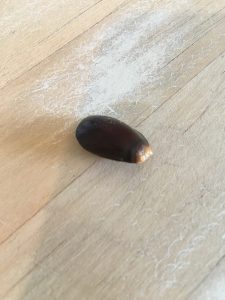What are other words for soursop?
Soursop is known by a variety of different words. The following words are soursop synonyms or related terms that are used when speaking or writing about the fruit.
Soursop
Soursop is the primary name most people use to refer to the fruit of the graviola tree. However botanists refer to it as Annona Muricata, and it is a variety of spiny fruit with a soft and sweet pulpy center.
Graviola
A synonym of soursop. Graviola can also be used as a reference to the tree that the fruit grows on.
Guanábana
Guanábana is a common Spanish name for soursop. Read more about guanabana
Brazilian Paw Paw
The paw paw is unassuming fruit tree that produces a delicious and sweet fruit (when ripe). Like soursop, it is a member of the Annonaceae family. Botanists believe that there are eight different species of paw paw. One is soursop which is often called the Brazilian paw paw.
Custard Apple
The creamy texture of the soursop flesh gives the fruit its secondary name “custard apple“.
Cherimoya
The cherimoya (Annona cherimola) was called chirimuya by the Incan people (a race of ancient Mexicans). It is sometimes spelled: chirimoya. It is a cousin of the soursop, just as a fuji apple and a gala apple are both apples but different types of apple.
Guyabano
In the Philippines, soursop is called guyabano. The word is derived from the Spanish word for soursop: guanábana.
Annona muricata
This is the latin based botanical name for the soursop tree.
Guanaba
Guanaba is the word for soursop in E1 Salvador.
Huanaba
Huanaba is the word for soursop in Guatemala.
; in Mexico, often as
Zopote de viejas
Zopote de viejas is a Mexican term for soursop. Translated it would mean old sapote. A sapote is a fruit with soft-flesh.
Cabeza de negro
Cabeza de negro is another way Mexicans describe soursop, although this usually refers to a similar fruit called Annona purpurea by botanists.
Related regional words for soursop
- Venezuela: catoche or catuche
- Argentina: anona de puntitas or anona de broquel
- Bolivia: sinini
- Brazil: araticum do grande, graviola, or jaca do Para
- Netherlands Antilles: sorsaka
- Surinam and Java: zunrzak
- French-speaking areas of the West Indies, West Africa, Southeast Asia, especially in North Vietnam: corossol, grand corossol, corossol epineux, or cachiman epineux.
- Malaya, In this south Asian nation it may be called durian belanda, durian maki or seri kaya belanda.
- Thailand: The Thais call soursop this term: thu-rian-khack





